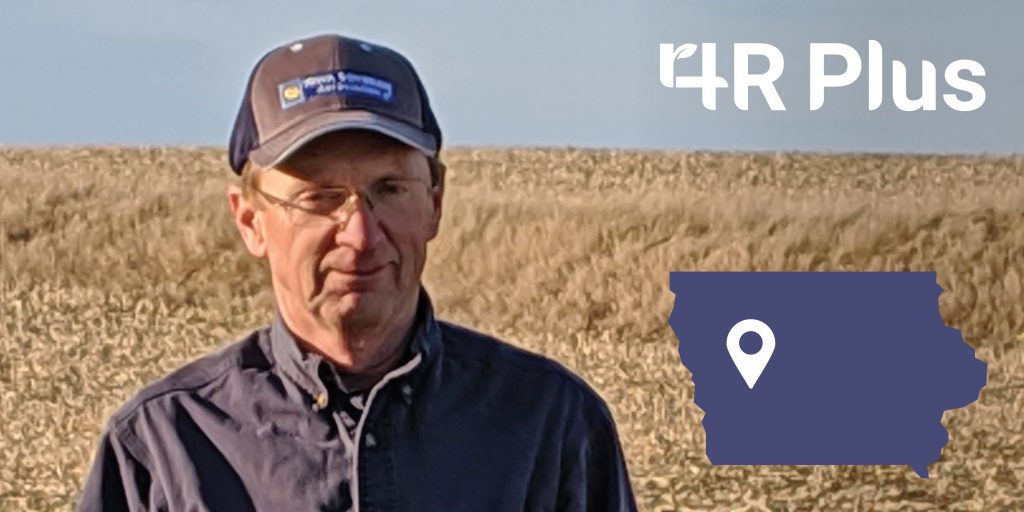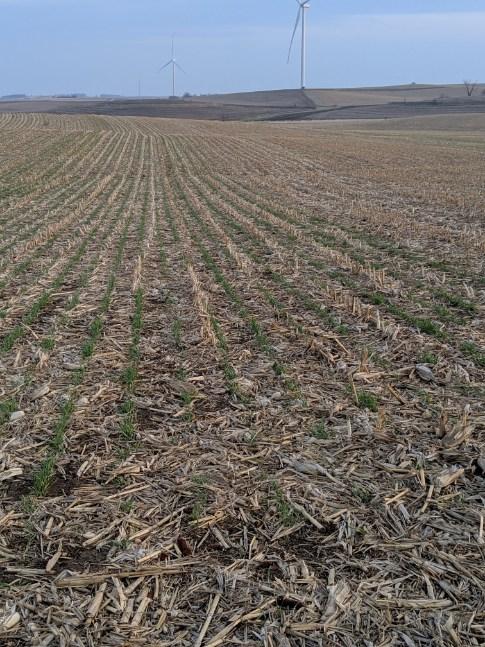 The weather this spring threw Audubon County farmer Doug Carter a curve: it cooperated. He could have started planting corn and soybeans sooner than he did, but he decided to take advantage of a favorable weather forecast to get more growth on the cover crops.
The weather this spring threw Audubon County farmer Doug Carter a curve: it cooperated. He could have started planting corn and soybeans sooner than he did, but he decided to take advantage of a favorable weather forecast to get more growth on the cover crops.
His plan paid off. He still wrapped up planting the first week of May, which is much sooner than in recent years. “I waited, planted a little later than I could have, because I wanted to get more growth on the cover crop,” Carter said. “We got the growth and it worked well for weed control.”

Carter is still working to get his planter tuned to deliver the best stand. Last year he picked up some attachments to regulate down-pressure, and struggled. “We made some changes this year and it’s a big bonus for even emergence,” he said.
But the weather hasn’t been perfect all season. After getting the crops in, rainfall has been limited. Temperatures were cooler in May, but above-normal temps in July have pushed the crop. By late July, Audubon County was classified as being in a “Severe Drought” by the National Drought Monitor. While local farmers are starting to see some moisture and heat stress, Carter thinks his crops are still at 95% of their normal potential. “It would be nice to have a timely shower or two for grain fill,” he quipped.

When it comes to no-till, he’s a big believer. “No-till protects from those big gully washer rains we had several springs in a row,” he said. “Now it’s helping to conserve soil moisture. When I see the soil-holding properties in no-till fields it makes me glad I switched tillage systems years ago.”
Carter is keeping his eyes open for additional soil health options for his fields. “I’m doing my research about relay cropping in 15-inch rows. It’s very interesting to me, but I’ve got more to learn before trying it out on my farm,” he said. “It helps when I can review information from farmers trying something new.”
Carter plans to continue cover crops on the acres closest to his home base. “I still have things to learn and plan to expand cover crops through the years,” he said. “Being able to manage and observe fields closer to home helps in my learning process.”
He believes that being persistent, and observant, are two traits that help when adopting 4R Plus practices. “It’s going to be different the first time you see a cover crop on your field, and things won’t always go smooth. Just don’t give up,” he advised. “We all need to get better at what we’re doing.
“And, yes, financially it’s hard to make changes right now, but we have to look at the big picture and consider adding the 4R Plus practices that conserve our natural resources and protect our farmland,” he said.
Click here to ask Doug a question about his farming operation.
